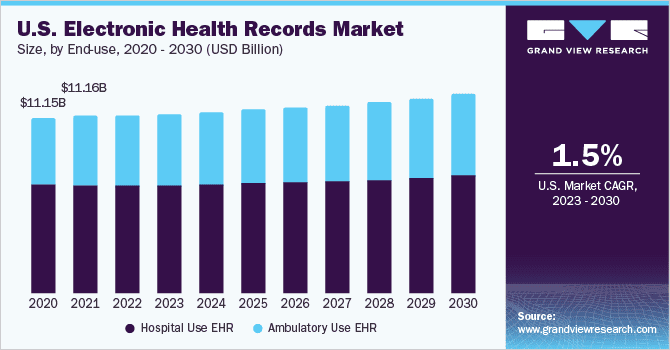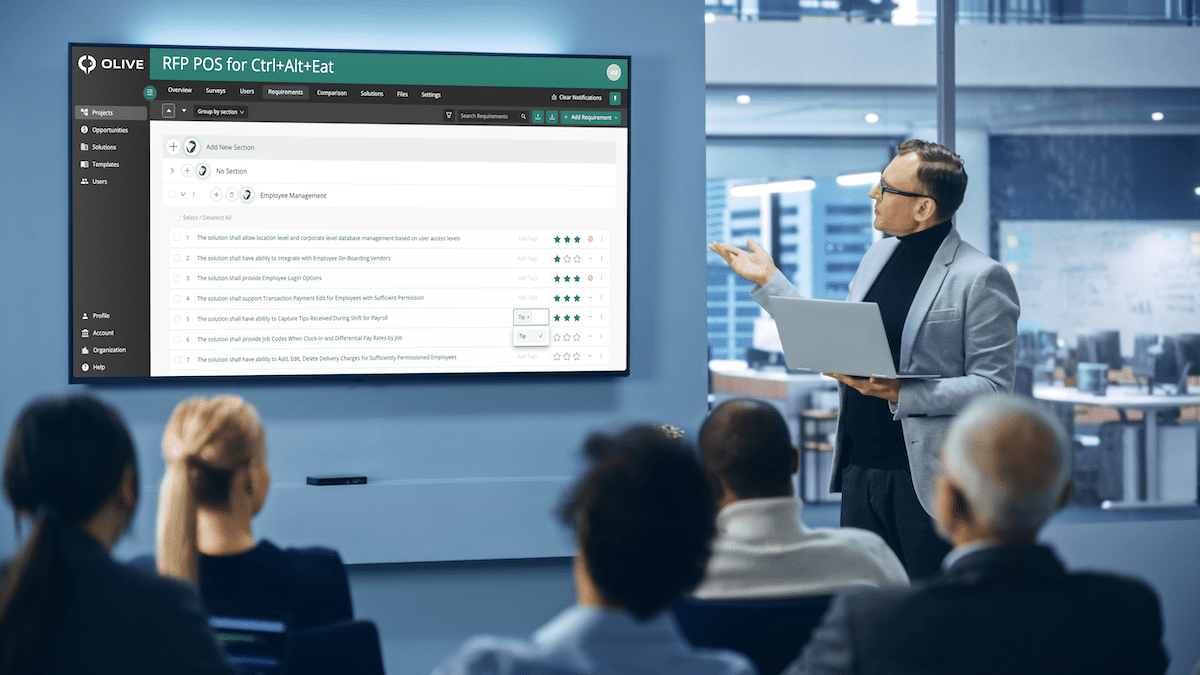Choosing the Best EHR (Electronic Health Record) System in 2024
What is the Best EHR System?
The best EHR (Electronic Health Record) System for your healthcare organization is the one that meets your specific needs. It’s not necessarily the system with the highest reviews on G2 or on the list of “top 10 best EHR Systems”, or the most well-known brand. To find the right EHR for your organization, you need to evaluate your needs thoroughly. If you want to learn how to choose the best EHR system for your organization, keep reading.
According to research, EHR implementation failure rates can exceed 50%.
An unsuccessful EHR implementation can be a nightmare for healthcare providers. The risks are enormous. There have been well-known EHR failures, such as the VA’s $16 billion EHR overhaul, which has been plagued by glitches and delays. The reasons for these failures include bias towards certain vendors and outdated processes. Refusal to embrace innovation and the status quo opens your organization to risks.
Whether you’re choosing an EHR system for a clinic, hospital, or private organization, finding the right EHR system can be a daunting task, particularly when multiple stakeholders are involved. Here, we’ll discuss how to find the best EHR for your organization.
What Is Electronic Health Record (EHR) Software?
EHR systems help healthcare providers manage a wide range of patient information, such as medical histories, lab results, and treatment plans. The right EHR system can enhance patient care and streamline practice operations. Your organization’s needs should dictate your selection.
Many healthcare industry organizations underestimate the importance of doing their due diligence when selecting the right EHR system. Organizations often settle for an EHR system that isn’t a perfect match, leading to wasted time and workarounds. When the right match is made, an EHR system can be a positive force for business transformation, providing your organization with a competitive edge.
Grand View Research
EHR Trends for 2024
The Rise of Cloud-based EHR Systems
In 2024, expect to see more healthcare providers adopt cloud-based EHR systems. Cloud-based EHRs offer several benefits, including easier access to patient information, enhanced security, and the ability to integrate with other systems. As a result, many providers are expected to make the switch to cloud-based EHR systems.
7 Steps to Choosing the Best EHR System Vendor in 2024
1. Determine a business case for the EHR system
Research and define your org’s processes, strengths, and pain points. Consider what processes will look like in the future. Why do you need a new EHR system? What problems will a new EHR system solve? This work will help you outline requirements and ensure you’re solving the right problem with an EHR system.
2. Identify and collaborate with key stakeholders to gather requirements
Identify the key stakeholders who need to contribute to the EHR evaluation requirements. Finding an EHR system that works for your healthcare organization requires collaboration with these key players to ensure high user adoption later. Skipping this step may cause you to miss a key requirement or functionality that key departments need. Including these voices in the technology evaluation process will deliver high user adoption of the EHR solution after implementation.
3. Collaborate with key stakeholders to define and rank your EHR requirements and evaluation criteria
Understanding the organization’s needs is a crucial step in selecting the right solution. Ensure that identifying these needs (in the form of requirements) is a collaborative process between critical decision-makers. Thinking about your current practice processes will help you determine exactly what your practice needs from a new EHR system, how it will fit into the practice, and what technical and functional requirements are needed to carry out daily operations.
The idea at this stage is to build a clear picture of how the organization currently operates and how those operations could be improved.
4. Search the market for EHR vendors that meet your selection criteria
The next phase in the software selection process involves searching for new EHR software. Your key stakeholders should be involved in the search for potential EHR vendors that might meet your evaluation criteria/requirements. Look for vendors that offer solutions that meet your requirements and that have the ability to solve the company’s identified problems. Even though looking at a long list of vendors and comparing them to your needs is long and tedious, it is necessary to find the right solution for your business needs. You can use a technology evaluation platform like Olive to automate this process rather than risk human error in spreadsheets and wasting time searching through emails.
5. Compare EHR vendors to your requirements
Through the traditional RPF Process or by inviting vendors to respond directly to your requirements in Olive, you can compare vendor responses to the needs of the business. Often when comparing vendors, you may create a scoring system or scorecard in spreadsheets to quantify how well each vendor measures up to each other and the project requirements. Once they respond, you should have a few shortlisted vendors that you can invite to demo. Compare the remaining vendors to your selection criteria to see which best fits the needs of the business.
Be aware of bias throughout the EHR evaluation process!
Software sales reps will always try to bias the decision in their company’s favor, so it’s essential to be aware of this when reviewing vendors. Hidden costs and risks associated with purchasing their software may arise after the deals are signed. At this point, you must do your due diligence to uncover “hidden costs” associated with EHR systems, including implementation costs, hardware upgrades, backfilling your project team resources, software maintenance, limits to the number of users, etc.
6. Develop an EHR Implementation project rollout plan
Remember that vendors are trying to make a sale, so make sure you dig deep into implementation duration estimates with them. Develop an implementation project rollout plan that includes activities required to install the software, along with necessary actions to ensure that the solution is tested, actually works, and is accepted by end-users. Do this before you choose a vendor so you understand the resource cost involved for project success. This plan should include everything from business process and workflow design to data migration, multiple test iterations, and critical organizational change management activities.
7. Measure the benefits against the costs of the new EHR system
Your client or organization might seek an EHR system to improve patient care, streamline workflows, or comply with regulations. Measure the benefits against the system’s costs so you can understand the full potential of the new EHR system.
Requirements and Features to Consider When Sourcing Your Org’s Best EHR (Electronic Health Record) Systems
Electronic Health Records (EHR) systems have become essential for healthcare providers to manage patient data efficiently. Here are some of the common features of EHR systems:
Patient Management
The system manages patient information such as demographics, contact information, medical history, allergies, medications, and vital signs.
Clinical Notes
The system provides a way to capture clinical notes, including progress notes, SOAP notes, and specialty-specific notes, such as mental health or obstetrics.
Electronic Prescribing
The system allows healthcare providers to prescribe medications electronically, including dosage, quantity, and route.
Laboratory Integration
The system can integrate with laboratory information systems to allow healthcare providers to order and view lab results electronically.
Imaging Integration
The system can integrate with radiology and imaging systems to allow healthcare providers to view and manage images electronically.
Appointment Scheduling
The system can manage patient appointment schedules, including cancellations, rescheduling, and reminders.
Billing and Coding
The system can generate bills and automate the billing process, including coding for procedures and diagnoses.
Interoperability
Thesystem can communicate with other healthcare providers, systems, and data sources, allowing for seamless sharing of patient data.
Clinical Decision Support
The system can provide clinical decision support tools, such as drug interaction checks, allergy alerts, and clinical guidelines.
Reporting and Analytics
The system can generate reports on patient data, including outcomes, trends, and quality measures.
Mobile Access
The system can provide mobile access to patient data, allowing healthcare providers to access patient information and perform tasks on mobile devices.
Patient Portal
The system can provide a patient portal, allowing patients to access their health information, schedule appointments, request prescription refills, and communicate with their healthcare provider.
Secure Messaging
The system can provide secure messaging between healthcare providers, patients, and caregivers.
Document Management
The system can manage documents related to patient care, including scanned documents, images, and electronic faxes.
Workflow Management
The system can manage workflows and tasks related to patient care, including task assignment, tracking, and completion.
Overall, the EHR system features aim to streamline the healthcare provider’s workflow, improve patient care and communication, and enhance the overall quality of care.
Source the right EHR System
Selecting the best EHR system for a healthcare organization is a critical process that requires careful consideration and planning. Thus, by following a structured approach that involves identifying key stakeholders, defining requirements, evaluating vendors, and developing an implementation plan, healthcare organizations can make informed decisions that lead to successful implementations. It is important to remember that the ultimate goal of selecting an EHR system is to improve patient care, streamline workflows, and achieve operational efficiencies.






